2017 numbers show how much Huawei still owns the telecoms market
Nokia, Ericsson and ZTE spent 2017 clearing the decks in advance of 5G. Meanwhile Huawei made more money than the rest of them added together.
April 3, 2018

Nokia, Ericsson and ZTE spent 2017 clearing the decks in advance of 5G. Meanwhile Huawei made more money than the rest of them added together.
Huawei just published it’s 2017 full year numbers and, if anything, it’s even further ahead of the chasing pack than it was a year ago. Converted into US dollars Huawei brought in over $20 billion more than the rest combined. The profit comparison is even more stark, with Ericsson’s write-offs blighting its numbers, but even Nokia’s net profit was only a third of Huawei’s.
The top line analysis is that Huawei is doing everything better and more profitably than everyone else. The chasing pack are all running with the narrative that they’ve turned a corner and things should get better from here, but Huawei is not about to relinquish market share without a fight. To expand the snapshot we’ve selected some statements from the respective annual reports below, followed by a summary of the numbers and the summary tables from each of the reports.
“We’re on a new journey,” said Ken Hu, Huawei’s Rotating Chairman. “Opportunities and challenges are popping up faster than ever before, and nonstop open innovation is the only way we can keep ahead of the game. Over the next 10 years, Huawei will continue to increase investment in technological innovation, investing more than 10 billion dollars back into R&D every year. We will actively pursue open collaboration, attract and cultivate top talent, and step up efforts in exploratory research. We want to better enable all industries to go digital and intelligent.”
“As we work to deliver that sharply improved performance, we will do so in a very Nokia way: disciplined execution, relentless focus on costs and a commitment to innovation and technological leadership for our customers,” said Nokia CEO Rajeev Suri.
“2017 was a year of starting over,” said Ericsson CEO Börje Ekholm. “We have a new strategy, a simplified company structure and strong plans in place to improve our performance. 2017 was also the year when 5G went from vision to reality and the first commercial contracts were signed. This also created traction for our 5G-ready 4G portfolio. The success of the ERS platform shows that technology leadership and a competitive portfolio pays off, both in terms of customer feedback and margin improvements. Going into 2018, we are fully committed to our plans and targets and we expect to see tangible results of our turnaround during the year.”
“In 2018, the Group is set to welcome new opportunities for development, given rapid growth in the volume of data flow over the network,” said ZTE Chairman Yin Yimin. “Specifically, such opportunities will be represented by: an accelerated process of 5G commercialization underpinned by ongoing upgrades in network infrastructure; robust demand for smart terminals; and an onrush of new technologies and models with AI, IOT and smart home, among others, providing new growth niches.”
2017 (US$ M) | Revenue | Op profit | % | Net profit | % |
Huawei | $ 92,549 | $ 8,645 | 9% | $ 7,276 | 8% |
Nokia | $ 28,564 | $ 3,260 | 11% | $ 2,363 | 8% |
Ericsson | $ 24,156 | $ -4,575 | -19% | $ -4,208 | -17% |
ZTE | $ 17,419 | $ 1,080 | 6% | $ 144 | 1% |
Huawei
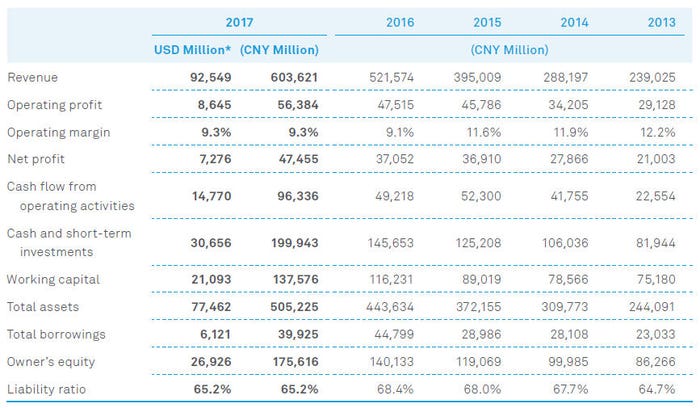
Nokia
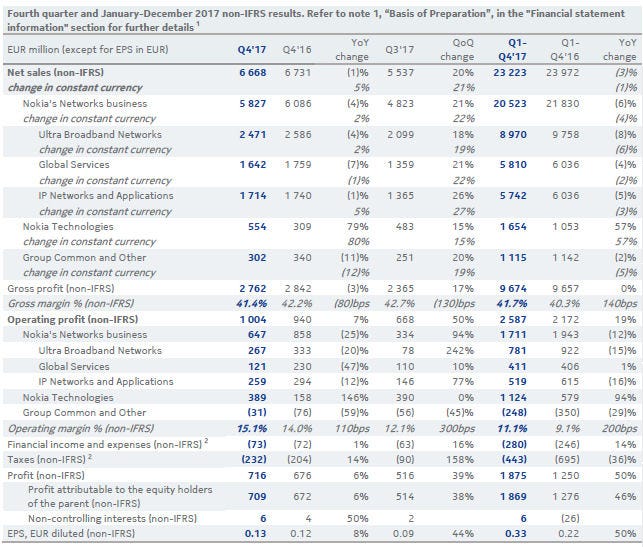
Ericsson
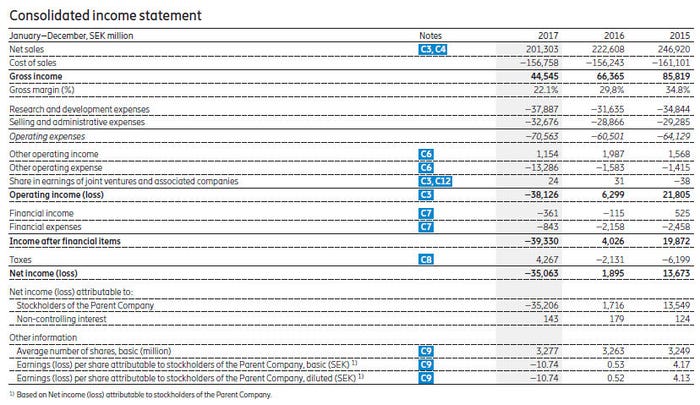
ZTE
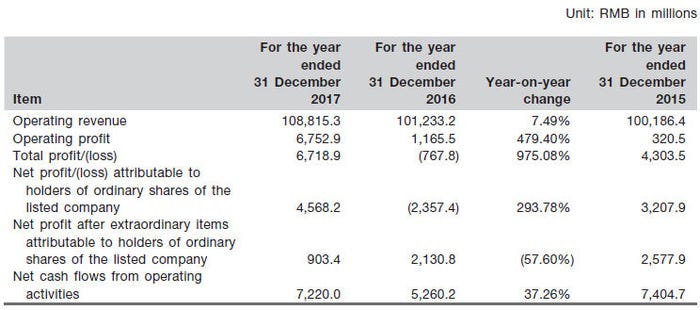
UPDATE 09:30 4 April 2018: It has been noted that the above comparison includes Huawei’s thriving consumer devices business while Nokia and Ericsson abandoned their equivalent efforts some time ago. So in the name of comparing apples with apples here are the Huawei 2017 CNY revenue splits by business unit and geography. The fact that Huawei managed to grow its net profit significantly in spite of deriving a greater proportion of its revenues from the relatively low margin consumer division is also worth noting.
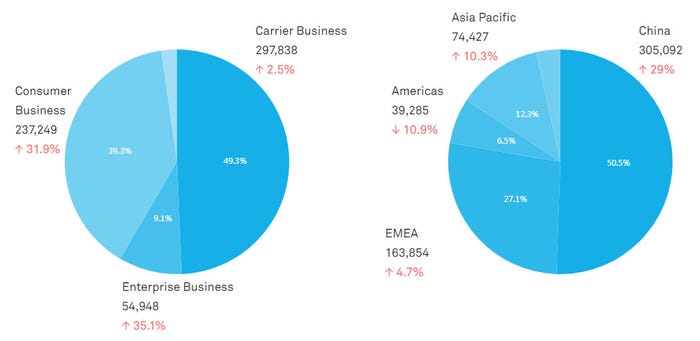
About the Author
You May Also Like










.png?width=300&auto=webp&quality=80&disable=upscale)


_1.jpg?width=300&auto=webp&quality=80&disable=upscale)